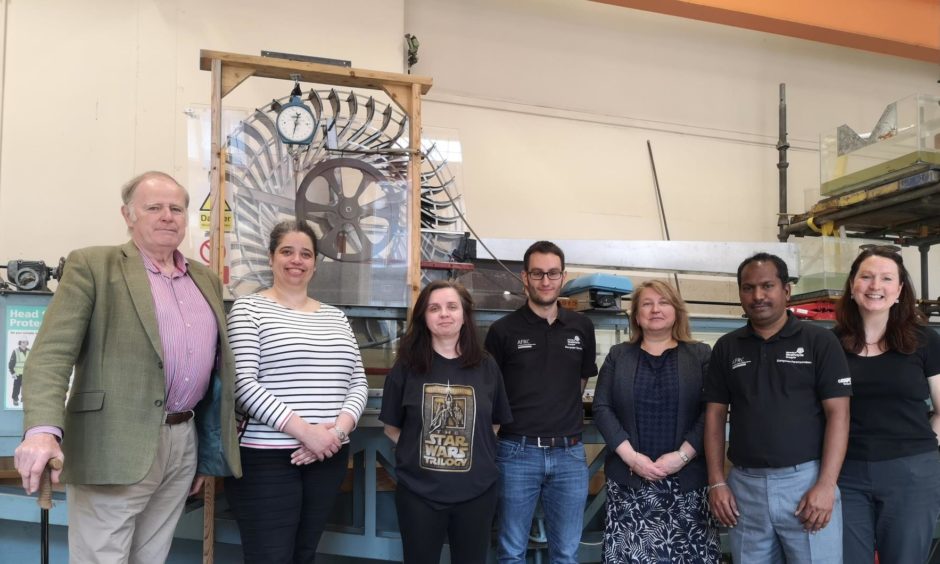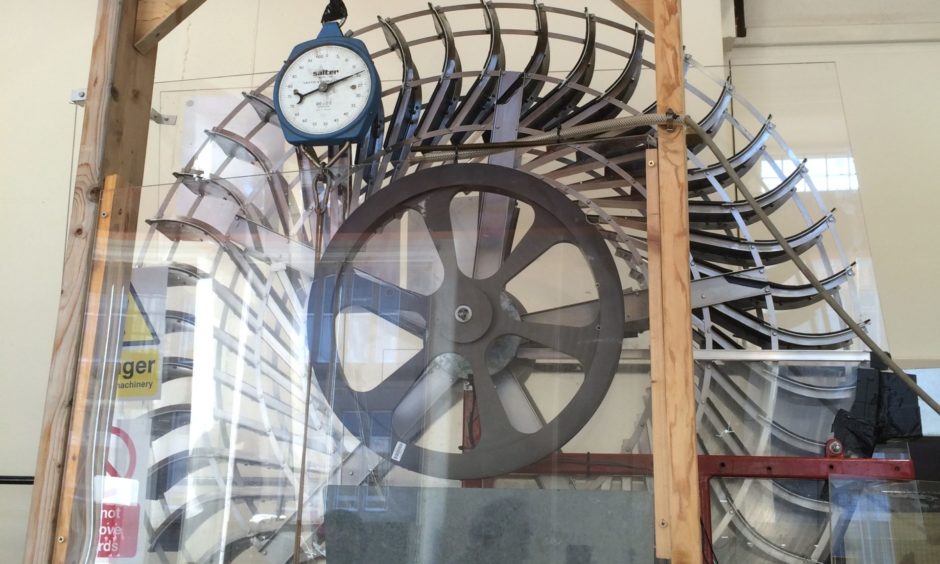A Perth company has ‘reinvented the wheel’ and now hopes to bring cheap electricity to communities around the world.
Carruthers Renewables has received the first patent for a waterwheel in 138 years.
The device is able to operating at a range of speeds and flows, with specially designed blades allowing Carruthers Wheel to harness the full potential of a river to harness a low cost supply of power.
The firm worked with Abertay University in Dundee to develop a prototype and has now teamed up with the National Manufacturing Institute Scotland (NMIS) to explore production.
Carruthers Wheel is able to produce electricity from waterfalls and rivers with less than five metres drop, something that was previously deemed unviable and unprofitable because of the high cost of turbines for small bodies of water.
The intention is that flat-pack Carruthers Wheels will be shipped to small communities across the world, where they can be installed and maintained by local unskilled workers. In many cases, the wheels will provide electricity to communities for the first time.
The device was invented by former maths lecturer turned civil engineer Penelope Carruthers.
She said the new water wheel does not interfere with the course of the water, making it more environmentally friendly than a traditional mill or turbine installation, which can have a negative impact on a river’s ecosystem.
“In the past, sites with lower than a five metre drop have been identified as a possibility for a hydropower before a decision was made to move on due to the high costs,” she said.
“With millions of such sites across the world, there remains a hugely untapped resource, which has the possibility to change the lives of people in the surrounding towns and villages.”
A one year project, valued at £250,000, will see Carruthers Renewables partner with the University of Strathclyde’s Advanced Forming Research Centre (AFRC), part of NMIS, as it looks for a cost effective way to produce the wheels.
“The support we have received from the AFRC so far has been incredible,” Ms Carruthers added.
“We have been working together to secure the best manufacturing route allowing easy install and maintenance of the wheel, along with the ability to withstand harsh environments.
“The goal is to make a wheel that will provide electricity to people who are currently living with no access to the grid and the progress made so far has been ground-breaking.”
The feasibility study has gained letters of support the Crown Estate, Scottish Water and the Scottish Environmental Protection Agency. A computational model of the wheel will be unveiled at the Hydro 2020 Conference in France this year.
Ekaterina McKenna, business development executive at the AFRC, said the device had huge potential.
She said: “According to a recent United Nations hydropower report, there are millions of sites worldwide with a river or waterfall of less than five metres drop, especially across Sub-Saharan Africa and South East Asia.
“In the small communities surrounding these sites, less than 10% of the population have access to electricity.
“The feasibility project with Carruthers Renewables is allowing us to support this growing start-up with its manufacturing engineering needs, including extreme cost-effectiveness and ease of maintenance, pushing the boundaries of what is possible, with the hope of taking the hydro- wheel to the next stage of development.
“Carruthers Wheel is a fantastic opportunity to deliver huge positive economic, societal and environmental impact in Scotland, across the UK and across the world.”












